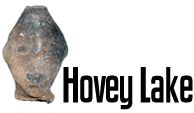 |
|
CURRENT
RESEARCH |
|
Learn
more about
Indiana Archaeology Month at Hovey Lake HERE! |
| Research
at the Hovey Lake site in 2003-2005 is supported by: a grant from
the Federal Highway Administration
(FHWA) under the Transportation Enhancement Program, Indiana
University, and private contributions. The Indiana
Department of Transportation (INDOT) administers the TE grant.
Also contributing to the research project are: Indiana Geological Survey, Indiana
University - Bloomington Department of Anthropology, the Indiana State Museum, University of Southern
Indiana, University of Evansville,
Indiana State University, and
community groups and volunteers. |
|
Last
Updated 9.6.2004
|
Geophysical Survey
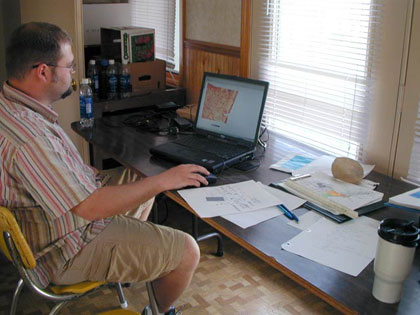
Amzie Wenning of the Indiana Geological Survey processing data from the
GPR
unit to make a plan (birds-eye) map of the anomalies in survey area 4NRS.
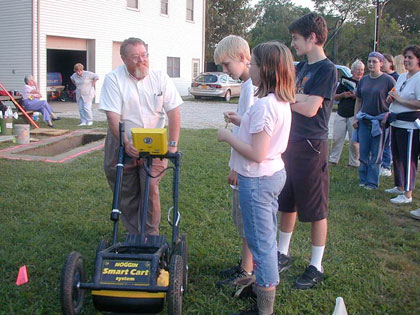
Dr. Nelson Shaffer of the Indiana Geological Survey giving
a demonstration on how the GPR unit works.
Soil Resistivity
In the spring of 2004,
we experimented with soil resistivity survey to learn whether this method
would add information about likely subsurface features.
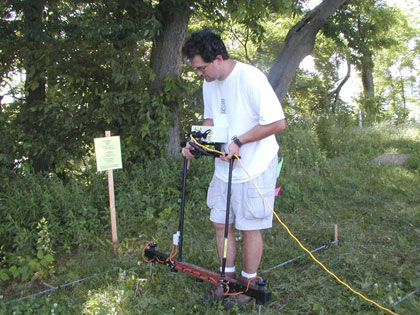
Duane Simpson of AMEC Earth & Environmental, Inc.
running the resistivity equipment on a grid.
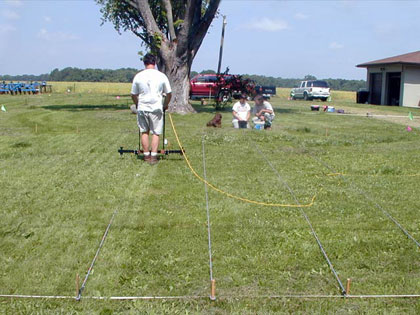
The resistivity machine runs on grids that are 10 or 20 meters long,
pausing to take a reading every 0.25 meter on the grid.
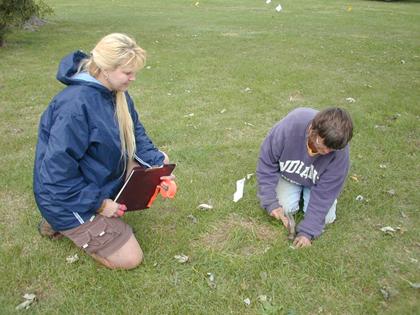
USI student Theresa
Oser and Project Research Assistant Jocelyn Turner
capping grid nails to protect them and make them easy to find when
geophysical surveys and soil core work resumes next year.


